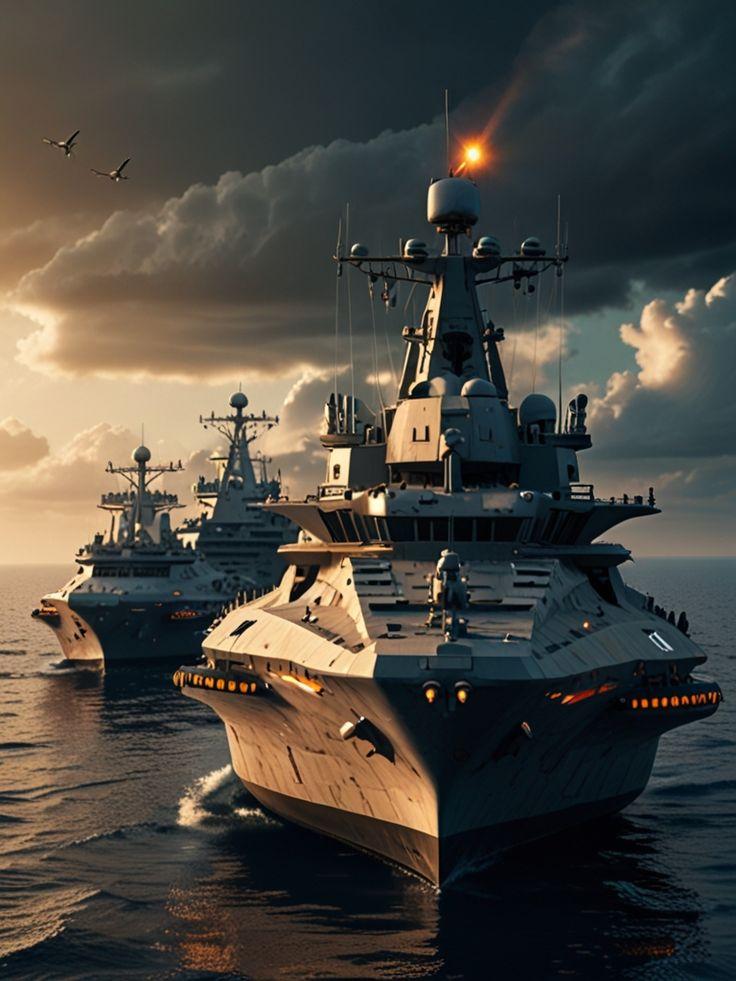The year 2025 promises to be a transformative period for naval forces globally. The rapid pace of technological advancements, shifting geopolitical landscapes, and evolving maritime strategies are setting the stage for unprecedented changes. Whether you’re a defense analyst, maritime enthusiast, or simply curious about the Navy’s future, these 10 essential navy current affairs for 2025 will provide a comprehensive glimpse into what lies ahead.
1. Rise of Autonomous Naval Systems
One of the most significant trends in navy current affairs 2025 is the integration of autonomous and unmanned systems. Navies are increasingly deploying drones, unmanned surface vessels (USVs), and underwater vehicles (UUVs) to enhance surveillance, mine detection, and even offensive operations. These systems promise to reduce human risk while increasing operational efficiency.
2. Artificial Intelligence (AI) in Naval Warfare
AI is becoming a cornerstone in naval decision-making. From predictive maintenance of ships to real-time tactical data analysis, AI is revolutionizing how naval operations are conducted. In 2025, expect more navies to deploy AI-enabled command centers that can process vast datasets faster than ever before.
3. Emergence of Hypersonic Missile Threats
Hypersonic missile technology has rapidly advanced, posing new challenges for naval defense systems. Navies worldwide are prioritizing the development of countermeasures to detect and neutralize these ultra-fast threats, marking a significant shift in maritime defense strategies.
4. Green Naval Initiatives
Sustainability is now on the radar for naval forces. Efforts to reduce carbon footprints through alternative fuels, energy-efficient propulsion systems, and eco-friendly shipbuilding materials are gaining momentum. The Navy current affairs 2025 include increased investments in “green” technologies to ensure a sustainable maritime future.
5. Strengthening Indo-Pacific Naval Alliances
Geopolitical tensions in the Indo-Pacific region continue to influence naval dynamics. In 2025, expect closer collaborations and joint exercises between navies like the U.S., Japan, Australia, and India to maintain balance and deter aggression.
6. Modernization of Submarine Fleets
Submarines remain critical for naval supremacy. Modernization programs focusing on quieter propulsion systems, enhanced stealth capabilities, and improved sonar technologies are underway. This ongoing evolution will enhance undersea warfare capabilities significantly.
7. Cybersecurity in Naval Operations
With navies becoming more reliant on digital networks, cybersecurity has emerged as a vital aspect of naval defense. 2025 will see expanded efforts to protect naval assets from cyber-attacks, including securing communication channels and operational software.
8. Space-Based Naval Surveillance
Space is becoming the new frontier for naval intelligence. Satellites provide unparalleled maritime domain awareness. Increased investment in space-based surveillance technologies is a notable feature in navy current affairs 2025, allowing real-time tracking of naval movements globally.
9. Naval Role in Humanitarian and Disaster Relief
Beyond combat, navies are playing a growing role in humanitarian aid and disaster relief. In 2025, this trend continues with enhanced readiness to respond to natural disasters and humanitarian crises, showcasing navies’ versatility beyond traditional warfare.
10. Expansion of Naval Cyber Warfare Units
The battle in cyberspace is now as critical as the one on the sea. Naval cyber warfare units are expanding their capabilities to conduct offensive and defensive cyber operations. This evolution reflects the increasing importance of cyber dominance in securing maritime interests.
Conclusion:
The navy current affairs in 2025 are defined by innovation, strategic collaboration, and adaptation to emerging threats. Staying abreast of these developments offers a window into the future of maritime security and global naval power dynamics. As navies worldwide evolve to meet 21st-century challenges, understanding these key trends is essential for anyone invested in the future of naval affairs.
